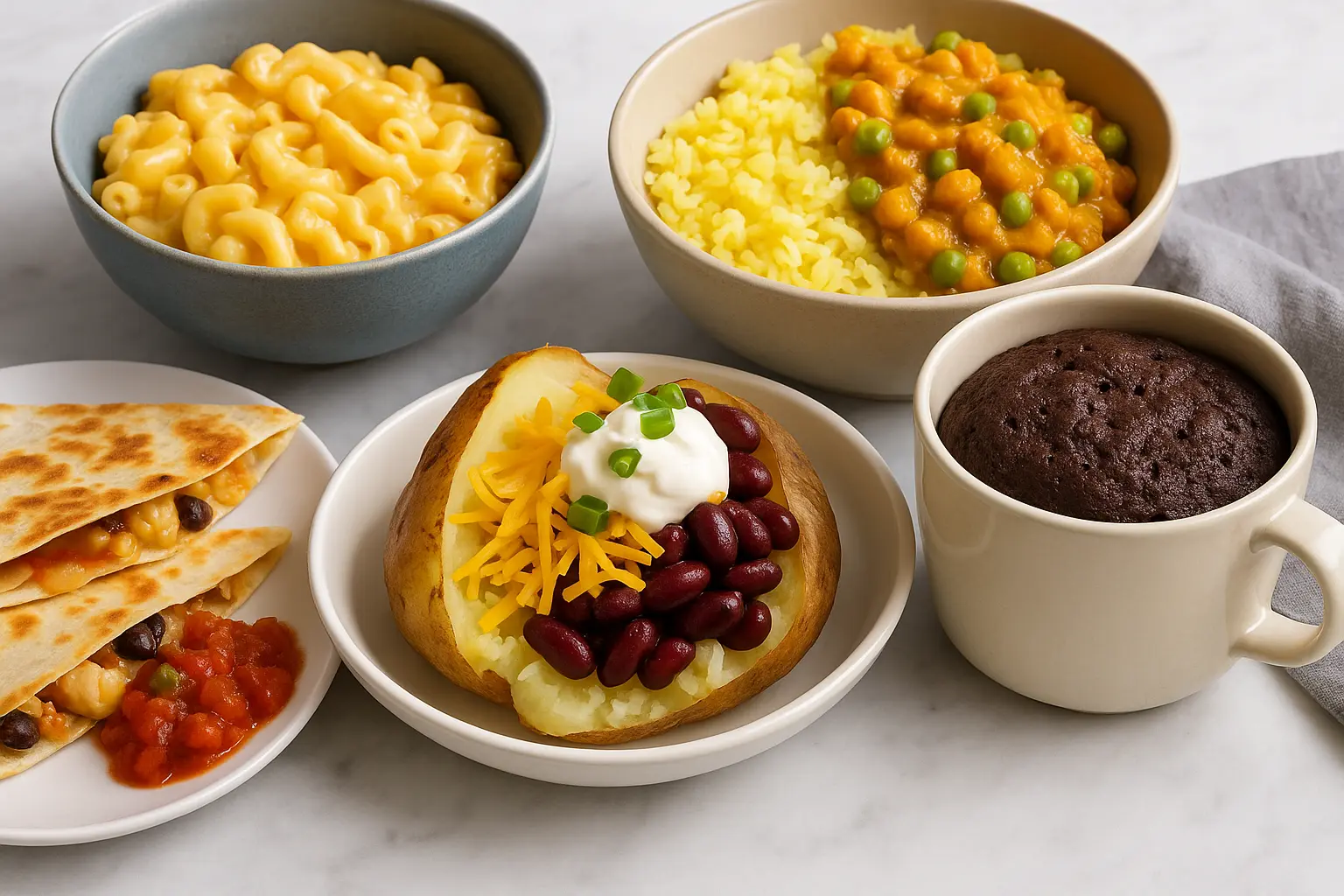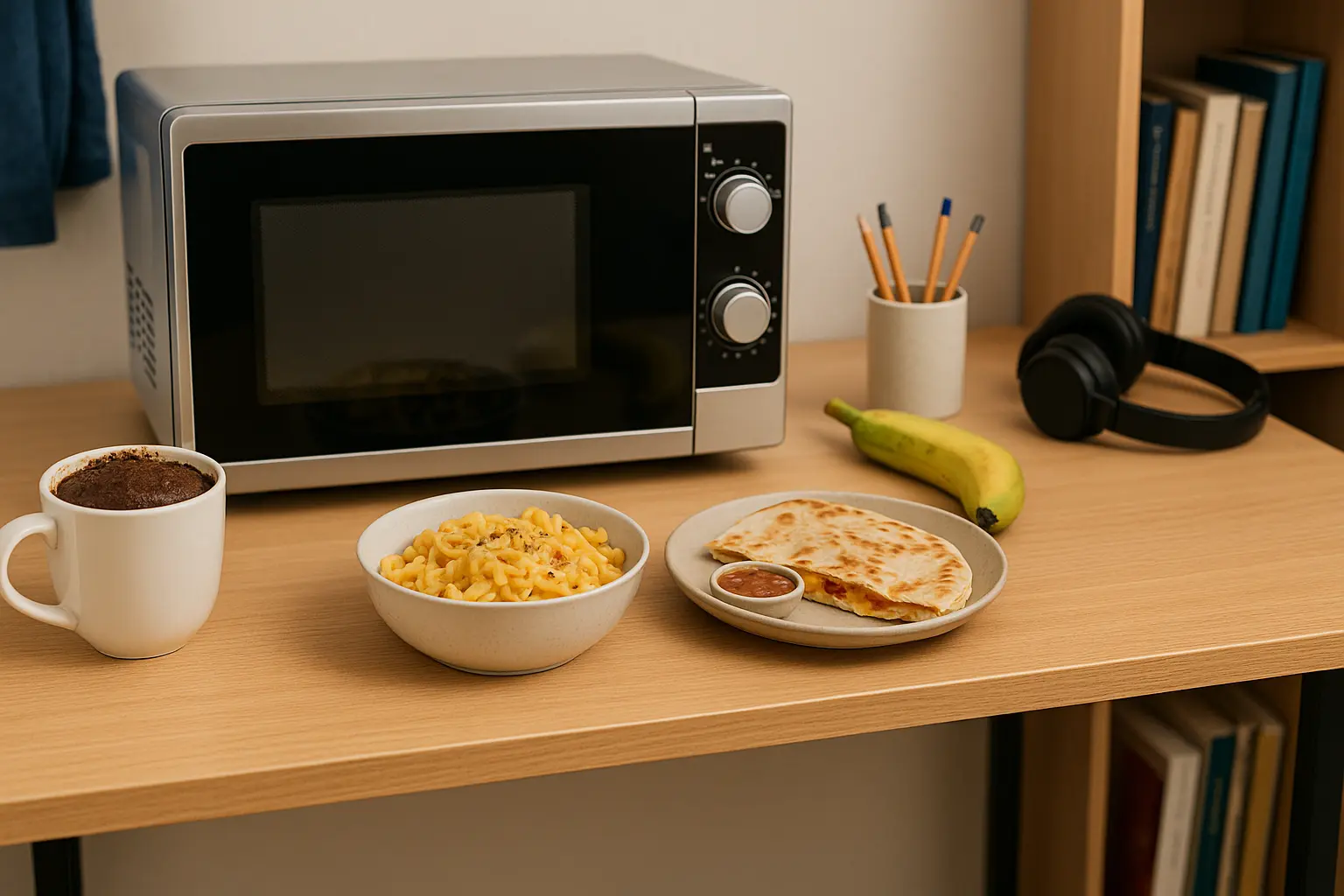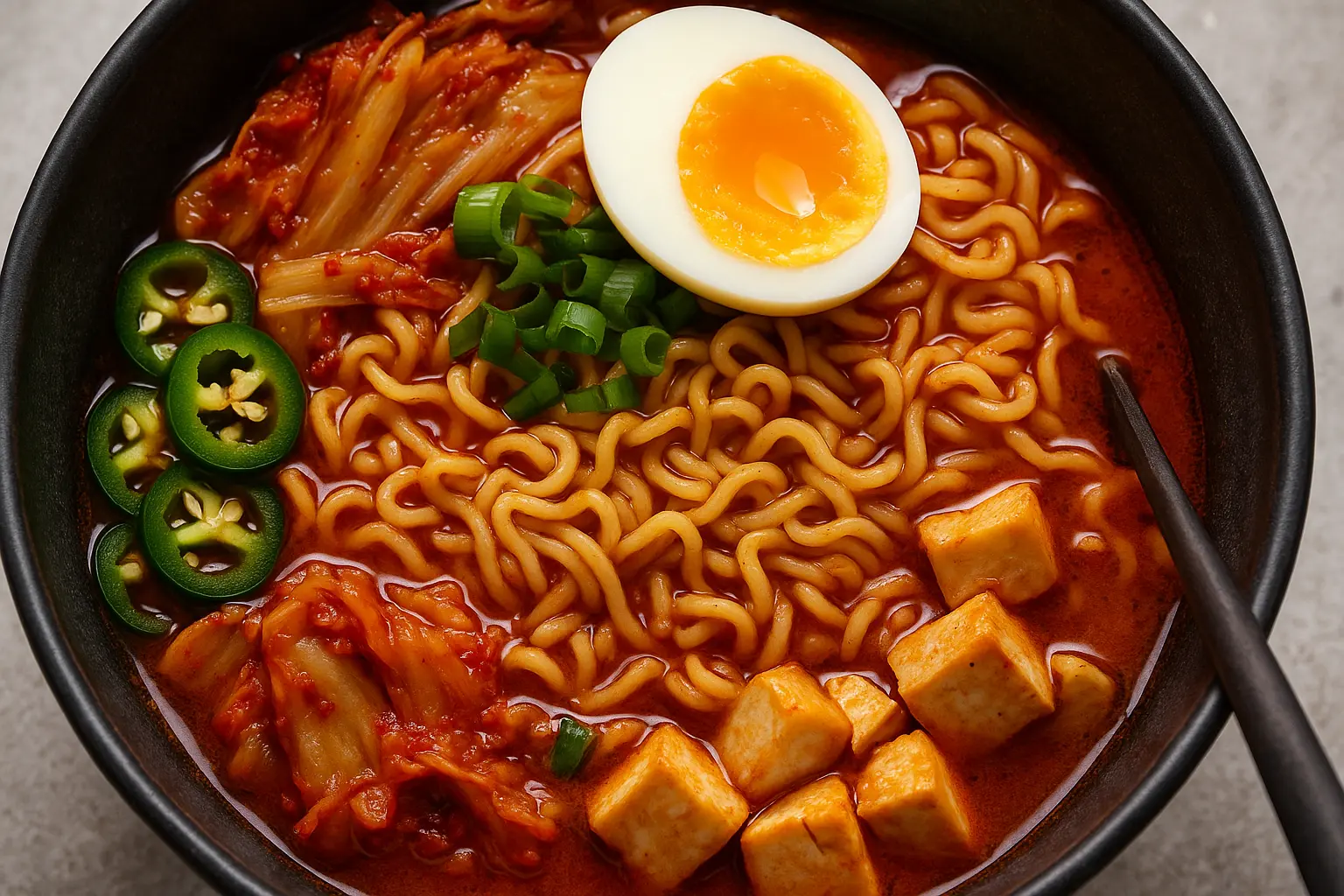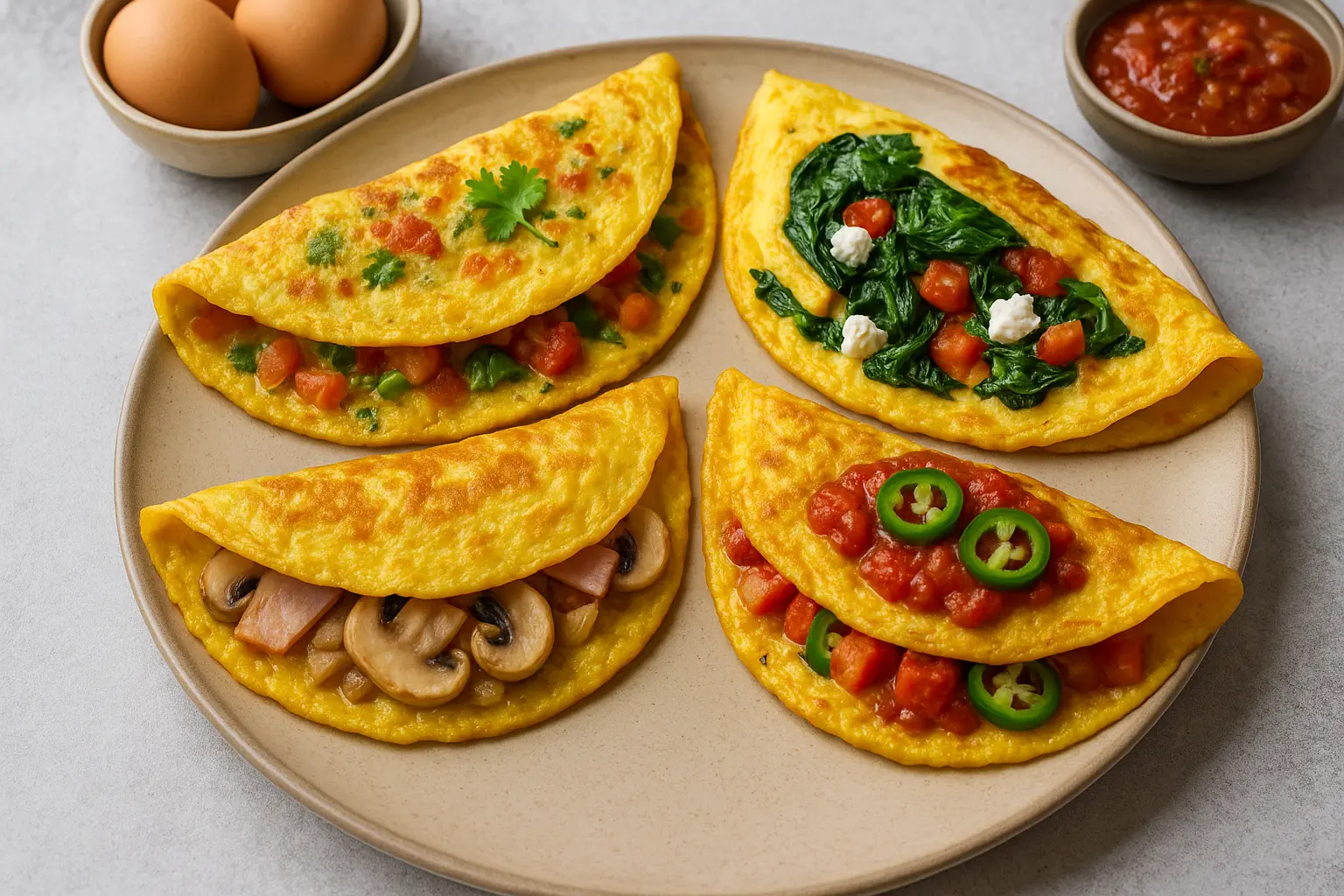Being a student often means balancing classes, assignments, social life, and part-time jobs—all on a tight budget and with limited kitchen facilities. Dorm rooms and small student apartments rarely come with full kitchens, and that’s where the humble microwave shines.
Microwave cooking isn’t just about reheating leftovers or popping popcorn; it’s a lifesaver for students who need nutritious, affordable, and fast meals. With a little creativity, you can whip up hearty breakfasts, filling lunches, satisfying dinners, and even indulgent desserts—all from your microwave.
This guide explores more than just recipes—it’s about creating a student-friendly cooking mindset. You’ll learn how to stock your pantry, master microwave techniques, and prepare full meals that don’t cost a fortune.

Chapter 1: The Student Pantry – Essentials for Microwave Cooking
To make microwave meals practical, you need the right staples. Stocking up on versatile, budget-friendly items ensures you can make meals in minutes without stress.
Dry & Pantry Staples
- Instant rice and microwaveable rice packs
- Pasta and ramen noodles
- Oats (quick-cooking or instant)
- Canned beans and lentils
- Peanut butter or almond butter
- Shelf-stable milk or plant-based alternatives
- Microwave popcorn
Fridge & Freezer Staples
- Eggs (yes, you can cook eggs in a microwave!)
- Pre-shredded cheese
- Frozen veggies (peas, corn, broccoli)
- Pre-cooked chicken strips or tofu
- Yogurt (for breakfasts and snacks)
- Tortillas and wraps
Seasoning & Flavor Boosters
- Salt, pepper, and chili flakes
- Soy sauce, hot sauce, or sriracha
- Dried herbs (oregano, basil, parsley)
- Garlic and onion powder
- Bouillon cubes for quick soups
With these basics, your microwave becomes a tool for endless meal combinations.
Chapter 2: Microwave Cooking Basics Every Student Should Know
1. Use Microwave-Safe Containers
Always cook in glass or ceramic containers labeled “microwave safe.” Avoid thin plastic or metal, which can be dangerous.
2. Stirring & Standing Time
Microwaves cook unevenly. Stirring halfway through helps distribute heat. Allow food to “stand” for a minute or two after cooking—heat keeps spreading during this time.
3. Cover with a Lid or Wrap
Using a microwave cover or damp paper towel prevents splatters and keeps food moist.
4. Cooking Times Are Flexible
Every microwave is different. Start with the suggested time, then add 30-second increments as needed.
Chapter 3: Quick Microwave Breakfasts
1. Mug Omelet
- Beat 2 eggs with milk, salt, and pepper in a mug.
- Add diced veggies, cheese, or ham.
- Microwave for 1–2 minutes, stirring halfway.
2. Overnight Oats (Microwave Edition)
- Combine oats, milk, yogurt, and fruit in a jar.
- Refrigerate overnight, then warm in the microwave for 1 minute if desired.
3. Peanut Butter Banana Mug Muffin
- Mash half a banana in a mug.
- Add 2 tbsp flour, 1 tbsp peanut butter, ½ tsp baking powder.
- Microwave 1–2 minutes for a quick muffin.
4. Microwave Breakfast Burrito
- Scramble eggs in the microwave.
- Add cheese and salsa, then wrap in a tortilla.
- Warm for 30 seconds for a portable breakfast.
Chapter 4: Student-Friendly Microwave Lunches
1. Cheesy Microwave Quesadilla
- Place cheese and beans between two tortillas.
- Microwave 1–2 minutes until cheese melts.
- Slice and serve with salsa.
2. Instant Noodle Upgrade
- Cook ramen in the microwave.
- Add frozen veggies and a whisked egg halfway through.
- Top with soy sauce and chili flakes.
3. Microwave Mac and Cheese
- In a mug: ½ cup pasta + ½ cup water.
- Microwave 3–4 minutes, stirring halfway.
- Stir in ¼ cup milk and cheese. Microwave another 1 minute.
4. Rice Bowl
- Heat microwave rice.
- Top with beans, salsa, cheese, and avocado.
- Add hot sauce for a burrito bowl vibe.
Chapter 5: Microwave Dinners That Actually Fill You Up
1. Microwave Veggie Curry
- Mix canned chickpeas, frozen peas, curry paste, and coconut milk in a bowl.
- Microwave 4–5 minutes, stirring halfway.
- Serve over instant rice.
2. Stuffed Bell Peppers
- Mix cooked rice, beans, and cheese.
- Stuff into halved bell peppers.
- Cover and microwave 6–7 minutes until tender.
3. Microwave Lasagna for One
- Layer cooked pasta, ricotta (or cottage cheese), marinara, and mozzarella in a bowl.
- Microwave 5–6 minutes until bubbly.
4. Baked Potato with Toppings
- Pierce potato, microwave 7–8 minutes.
- Top with sour cream, beans, and cheese for a filling meal.
Chapter 6: Snacks & Appetizers for Study Breaks
1. Microwave Nachos
- Layer tortilla chips with cheese and beans.
- Microwave 1–2 minutes.
- Add salsa, jalapeños, and sour cream.
2. Microwave Popcorn Upgrade
- Pop a bag, then add chili powder, parmesan, or cinnamon sugar.
3. Mini Pizzas
- Spread marinara on an English muffin.
- Add cheese and toppings. Microwave 1–2 minutes.
4. Microwave Edamame
- Steam frozen edamame with water in a bowl.
- Sprinkle with sea salt.
Chapter 7: Easy Microwave Desserts
1. Chocolate Mug Cake
- Mix 4 tbsp flour, 2 tbsp cocoa, 3 tbsp milk, 2 tbsp sugar, and oil in a mug.
- Microwave 1–2 minutes.
2. Apple Crisp in a Mug
- Slice apple, add cinnamon, sugar, and oats with butter.
- Microwave 2–3 minutes until tender.
3. Microwave Brownie
- Combine flour, cocoa, sugar, and milk in a mug.
- Microwave 1–2 minutes for fudgy brownies.
4. Microwave Cheesecake Cups
- Mix cream cheese, sugar, and vanilla.
- Microwave 1–2 minutes, chill, and top with berries.
Chapter 8: Budget Tips for Student Microwave Cooking
- Buy Frozen Veggies: Cheaper than fresh, last longer, and just as nutritious.
- Meal Prep Basics: Cook rice or pasta in batches, then portion for quick meals.
- Use Multipurpose Ingredients: Cheese, tortillas, beans, and eggs can be reused in endless combos.
- Avoid Takeout Temptation: Microwave meals cost a fraction of delivery food.
- Shop Generic Brands: Store-brand staples are usually just as good as big names.
Chapter 9: Cooking for One (or Two) – Portion Control Hacks
- Cook in mugs or small bowls to prevent food waste.
- Divide larger microwave meals into containers for meal prep.
- Label leftovers with dates to avoid spoilage.
Chapter 10: The Student Lifestyle Connection
Microwave meals aren’t just about food—they’re about independence. Learning to cook with limited tools builds confidence, helps students save money, and supports healthier eating habits. Whether you’re cramming for exams, juggling late-night assignments, or just want a warm meal after lectures, these recipes prove that convenience and nutrition can go hand-in-hand.
Conclusion: Microwave Cooking Is More Than Survival
For students, the microwave is more than just a shortcut—it’s a gateway to affordable, creative, and satisfying meals. With the right recipes and strategies, you can turn dorm living into a surprisingly delicious adventure.
Whether it’s a quick omelet, a budget-friendly curry, or a late-night mug cake, these recipes help students eat well without breaking the bank or wasting time. Microwave cooking isn’t just survival—it’s a skill every student should master.
Leave a comment
Your email address will not be published. Required fields are marked *




















